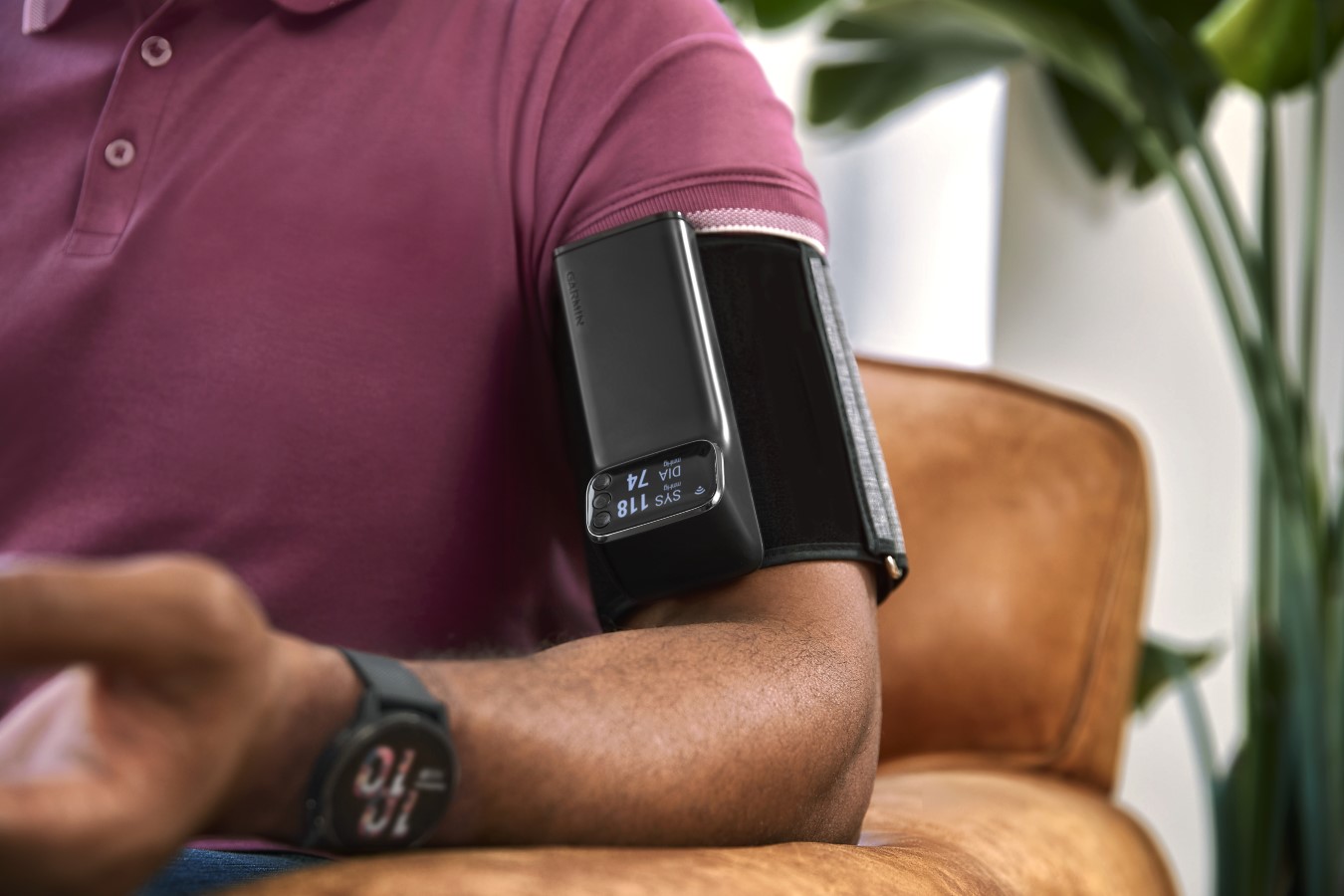That’s why I was thrilled when Garmin announced the Index BPM smart blood pressure monitor two months ago. So much so that I ordered mine for its $149 listing price as soon as I received the press release. The Index BPM is also an FDA-cleared medical device that you can use your FSA or HSA funds to purchase.
Specifications
A little bit about me
While I have never exhibited any heart issues or feelings that might lead me to suspect a health issue, when I went for my physical last year, the doctor said I had elevated blood pressure and prescribed Losartan to take once per day. While I don’t have a family history of high blood pressure, I am about 20 pounds overweight and have enough stress to make such a condition normal at 53 years old. When I was in high school, I failed a Department of Defense physical and, since then, have had white coat syndrome, meaning my blood pressure at the doctor’s office is usually elevated beyond what it actually is in a non-clinical setting. Thus, taking my own blood pressure at home with a reliable monitor is important in giving me realistic readings. Review: I put the Apple Watch Ultra through a 15K Tough Mudder
How’s the fit?
The Garmin Index BPM is a bit larger than I anticipated with a monitor size of 58x145x47mm and 320 grams. The main unit holds four AAA batteries that are rated to provide up to nine months of battery life, though the rating will vary based on how often you use the reader, of course. In terms of fit, the unit rests on the inside of my upper arm without much discomfort, but some people may find it bulky to use. For example, velcro is used to adjust the cuff length and can be a bit of a challenge for those with smaller arms where the extra cuff length may not secure to the vertical velcro material that is spaced a couple of inches apart. Review: Garmin’s Enduro 2 is the ultra sports watch to beat The good thing is that are no hoses or wires stemming out from the device, which makes it less of a hassle to set up and put away. Garmin says that the soft cuff piece is designed to fit arm sizes from 9 to 16.5 inches in circumference, and I personally had no issues fitting into it. Three physical buttons are found to the right of the OLED monochrome display. The buttons are black so it’s not the easiest to make out what is printed on them unless you are in a well-lit area and/or have extraordinary eyesight. Given that elevated blood pressure is often associated with age, it would’ve been nice to see white labeling on these buttons instead. Also: Why my Garmin Enduro 2’s LED flashlight is my favorite feature To operate the device, the top button is used to select the user profile (up to 16 people can share the cuff), a press-and-hold of the middle button initiates the blood pressure reading, which runs for three reading sessions with one minute in between each, and the bottom button toggles between Bluetooth and Wi-Fi syncing.
Garmin Connect integration
The blood pressure monitor is easy to use and performs consistently, but the primary reason I ordered one for myself is the integration with Garmin Connect. For instance, you can customize the My Day view in the smartphone app and view your latest blood pressure reading as soon as you launch Garmin Connect.
Review: Garmin Index S2 smart scale
You can also open up the blood pressure view to see your latest readings by day, week, month, or even year. The daily view lays out your blood pressure on a systolic and diastolic plot with zones for normal, elevated, stage 1, and stage 2. In addition, you can create a PDF report for a 4-week period that you can then share with your health care provider.
Besides my white coat syndrome, I often find myself falling behind schedule when it comes to recording my blood pressure levels. That’s why I was glad to see that I could set up reminders in Garmin Connect. Now, I have morning and evening reminders that help me follow a regular routine for measurements.
How does it compare to a traditional monitor?
I compared the Garmin Index BPM with a Withings BPM Connect that I also own. While the Withings measured the same diastolic (bottom) number most of the time, it showed 10-15 mmHG higher for the systolic level most of the time. I then compared the Garmin Index BPM to a manual cuff and the reading was within 2-4 mmHG of each other, so I’m pretty confident in the reading from the Garmin. Trends are also very important to keep track of, so I was able to take the stats from the Garmin Connect program to compare with the reports from my traditional cuff.
Bottom line
Data shows that nearly half of the adults in the US have hypertension, which is a systolic blood pressure of greater than 130 mmHg or a diastolic pressure greater than 80 mmHg. Thus, to understand your health and wellness status, it is essential to measure and track your blood pressure. I am very happy to see Garmin now integrate this metric in Garmin Connect and with this move I am convinced that it’s the right primary platform for me.
More: Five best blood pressure monitors
With my Garmin watches, Index S2 scale, and Index BPM monitor, I now have a full and complete picture of my health. The blood pressure monitor is easy to use, reliable, and integrates perfectly into Garmin Connect.
Alternatives to consider
If you don’t use other Garmin devices, you may be looking for other cuff options and there are several alternatives to traditional blood pressure cuffs.
